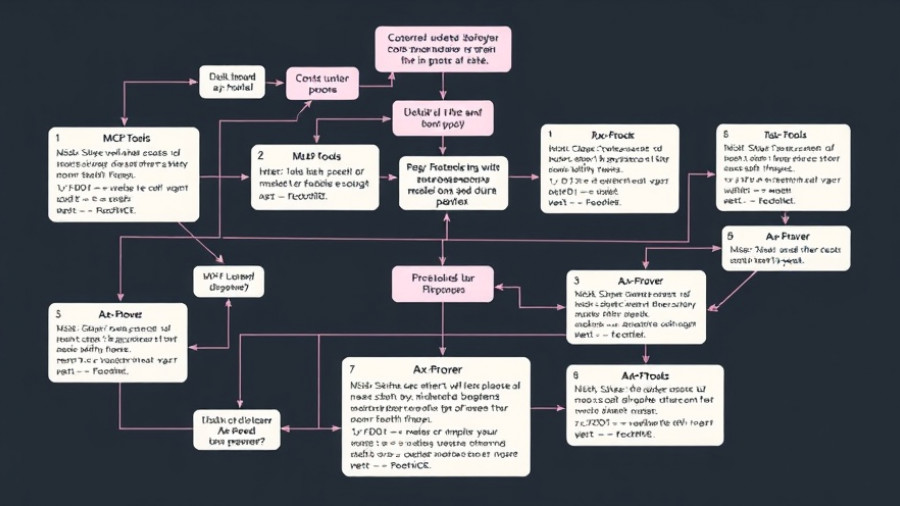
How Agentic Reasoning Outperforms Traditional AI Models
The realm of artificial intelligence (AI) is rapidly evolving, particularly in the domain of deep reasoning AI, where the competition escalates daily. Recently, the Agentic Reasoning framework developed at the University of Oxford has put forward a compelling challenge to existing AI systems like Google Gemini Deep Research. This open-source approach transcends traditional capabilities by employing multiple AI agents to solve complex problems that require rigorous research and logical reasoning, yielding results that outperform many of its proprietary counterparts.
Understanding the Framework of Agentic Reasoning
The innovative Agentic Reasoning framework integrates external tool-using LLM (Large Language Model) agents that function collaboratively to tackle multi-step logical inquiries. Unlike conventional models that operate within isolated parameters, Agentic Reasoning employs specialized agents, including a web search agent, coding agent, and a mind map agent, to enhance its functioning. This architecture enables the system not only to gather information and produce computations but also to structure reasoning paths effectively.
Enhanced Capacities Through Agent Collaboration
A key aspect that sets Agentic Reasoning apart is its division of labor among multiple specialized agents that tackle different facets of complex tasks. The web search agent retrieves dynamic content from the internet, while the coding agent integrates computational verification through programming languages. Meanwhile, the mind map agent organizes knowledge and insights sequentially to maintain a coherent flow of reasoning. Research indicates that this model significantly reduces cognitive overload on the reasoning AI, enabling it to focus intently on problem-solving rather than the mechanics of data gathering and processing.
Performance Insights: A Benchmark Comparison
When put to the test, Agentic Reasoning achieved superior results over Google Gemini Deep Research, especially on domain-specific deep research tasks in fields like medicine, finance, and law. In multiple open-ended questions uniformly designed for PhD-level expertise, Agentic Reasoning consistently demonstrated a higher pass rate as judged by domain experts. Through scenarios involving complex queries where traditional AI might falter, it became clear that the structured reasoning approach of Agentic Reasoning leads to more satisfactory outcomes.
The Importance of Open-Source AI
The open-source nature of Agentic Reasoning signifies a pivotal shift in how AI technologies are developed and shared. By making this powerful framework available to the scientific community, developers and researchers can contribute to its refinement, leading to ongoing enhancements in its performance and ethical standards. Open-source frameworks facilitate collaboration, encourage innovation, and promote competition, ultimately benefiting society by making advanced AI tools accessible to a wider range of users.
Future Implications for Scientific Discovery
As projects like Agentic Reasoning emerge, they pave the way for advanced AI systems that are expected to revolutionize fields that hinge on deep analytical abilities. The implications could be profound, from accelerating scientific breakthroughs to addressing pressing global challenges by harnessing AI capabilities to analyze vast datasets and generate novel hypotheses. For instance, similar efforts, such as the AI co-scientist introduced within Google’s Gemini system, reflect the burgeoning significance of collaborative AI systems in transforming scientific inquiry.
The Path Ahead: Potential Developments and Challenges
Despite the significant advances achieved by Agentic Reasoning, challenges remain, including potential errors in reasoning sequences and the pitfalls of excessive reliance on multiple external tools. Continued development will need to address these issues, advocating for adaptive algorithms that learn from mistakes while refining their output accuracy. Future iterations could lead to synergistic models where humans and AI collaboratively approach problem-solving, thus enhancing decision-making in complex scenarios.
As AI continues to evolve, understanding frameworks like Agentic Reasoning is crucial for capitalizing on technological advancements. By staying informed about these progressions, individuals and organizations alike can make strategic decisions regarding the adoption of these complex systems.
With the rapid expansion of deep reasoning AI, now is the time to explore how such innovative frameworks can cater to your research or professional needs. Embrace the future of AI and consider adopting advanced collaborative systems to stay ahead in scientific and commercial endeavors.
 Add Row
Add Row  Add
Add 




Write A Comment